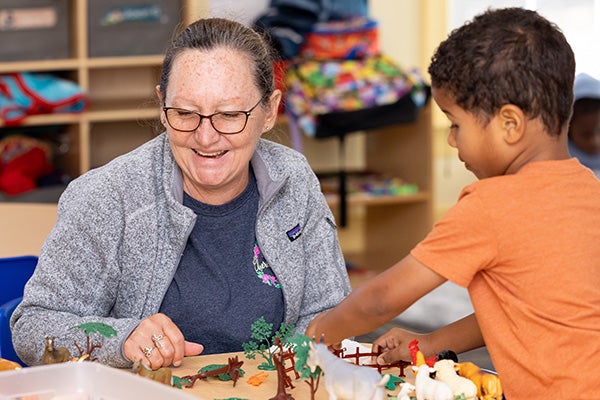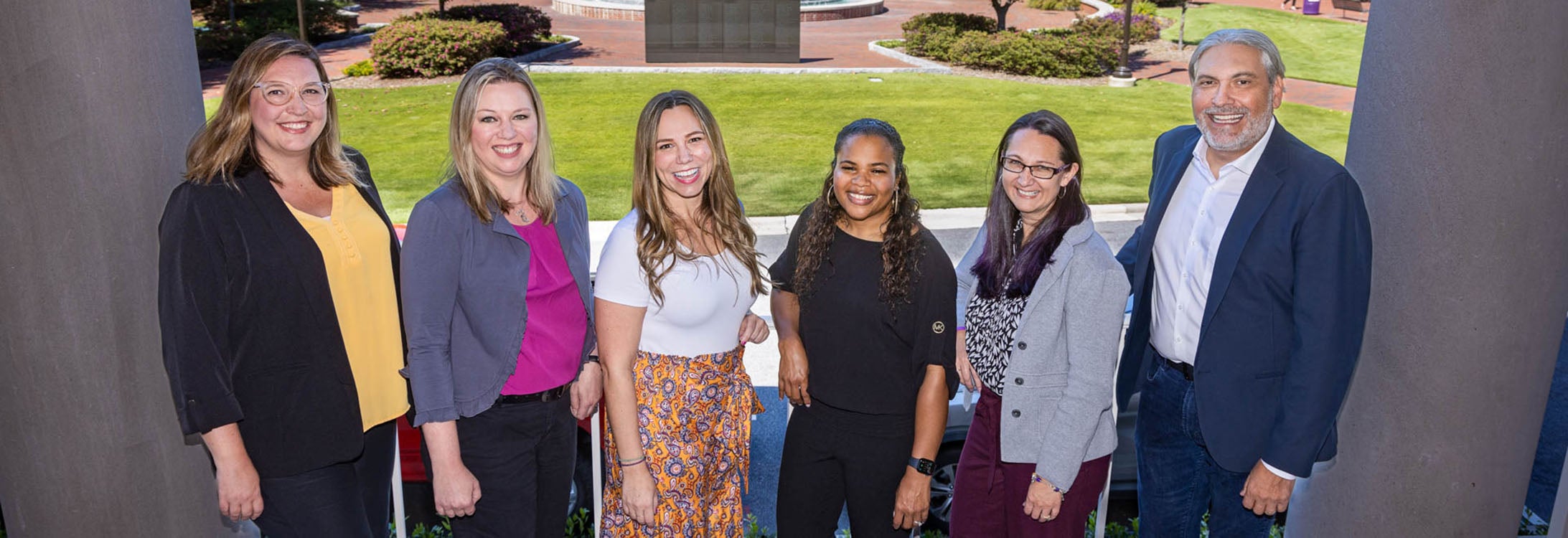BUILDING A PIPELINE
$9M grant supports creation of educator preparation program in educational justice
At its heart, the East Carolina University College of Education is dedicated to enriching and giving back to the rural community around Greenville, and a new $9 million grant will allow it to create a new teacher pipeline to do just that.
The federally funded Teacher Quality Partnership grant aims to support educator preparation programs. ECU’s faculty are using this grant to create the Educator Pipeline in Rural Action for Teaching Equity (edPIRATE) in partnership with the Elizabeth City-Pasquotank, Greene County, Washington County and Lenoir County school districts.

The $9 million grant funded by the Department of Education aims to support educator preparation programs. (Photo by Rhett Butler)
“We’ll create cohorts of Master of Arts in teaching (MAT) students to go through and learn about educational justice and really think about their practices in equity and building positive classrooms in schools,” said Dr. Kristen Cuthrell, Rural Education Institute director and the principal investigator on the grant.
ECU’s MAT program has been on hiatus for a few years and this grant aims to reinvigorate the program.
“The College of Education remains committed to producing quality educators who are equipped to deliver excellent educational instruction and experiences to our K-12 students resulting in improved academic achievement,” said Dr. Art Rouse, College of Education interim dean. “Hence, the edPIRATE grant is an avenue that provides us that opportunity while also partnering with school districts to remove some barriers to the classroom. The edPIRATE grant, in association with our MAT degree program, prepares teachers with a rural focus and continues to increase the educator pipeline.”
Cuthrell is joined by five co-PIs on the grant: Dr. Jennifer Gallagher and Dr. Christy Howard from the Department of Literacy Studies, English Education and History Education; Dr. Karen Jones and Dr. Matthew Militello from the Department of Educational Leadership; and Dr. Amy Swain from the Department of Special Education, Foundations and Research.
One of the main goals is to create a program that is sustainable long after the grant ends. According to Cuthrell, students will stay within their communities and commit to their school districts for three years.
“We’re building a pipeline — a workforce — of teachers,” she said. “We’ll be recruiting teachers of color into the program because we’re believers in representation matters and making sure that everyone has access and sees themselves in the classrooms they’re in.”
That element of the grant is what drew Howard into this work.
One of the elements of the grant that Howard is most excited about the intentionality of building a program with an equity lens.
“It was the intentionality of it — doing this work through an equity lens and, very specifically, the focus on recruiting students of color into the program,” she said. “That intentionality is really important right now in our state and for our students.”
Having an interdisciplinary team ensures that the grant can also work with leadership in the school districts to implement the program in a way that works for each district
“The most important piece of the puzzle in a school building is the teacher. There’s no doubt about that,” Militello said. “But the one person that influences that schoolteacher more than anybody is that school leader. Within the school building, they can foster or they can dismantle innovation really quickly. So we decided to look at this holistically and truly partner in this.”
Jones and Militello will also bring knowledge of micro-credentialing to the grant team from previous projects in their department. Micro-credentials are short credentials that show competency and proficiency in a skill area.
“While the teachers are in their first couple of years, we will be doing micro-credentialing work with the school administration in those buildings and districts,” Cuthrell said. “Then those new teachers, depending on how we phase in micro-credentialing, could maybe start picking up some of those.”
Gallagher and Swain discussed three main questions when discussing the MAT curriculum: who is teaching, what are they teaching and why are they teaching.
“The focus is developing teachers who have a rationale and an advocacy for both the teaching profession and their students so that the teachers would have autonomy through the community school model,” Swain said.
“When teachers are placed in these rural communities, they see themselves as part of an ecosystem and not just coming in to deliver the curriculum. They see themselves as part of a community from the beginning.”
Gallagher is most excited for the partnership between teachers and school leaders who are dedicated to educational justice.
“The idea of this synergy of leadership and principals being on board with this and being committed to these ideas at the same time that the teacher candidates are being prepared with them, I think can be so powerful,” she said. “Teachers know they’re going into a space to teach where there’s a commitment to these ideas.”
The grant funding provided the catalyst to put into action many of the conversations that faculty and districts had been having over the last several years.
“Not only do we want to achieve those goals of creating and supporting teachers that reflect the community, and having them pedagogically engaged in the equity work that we know needs to happen … But I think that the headline to me is when we go talk to the superintendents about what their needs are right now,” Militello said. “What we’ve taught our students is where are your greatest gifts and where do those intersect with the communities. I think our gifts in the College of Education and the team together is do this equity-focused work and it’ll meet the needs of the community.”
Cuthrell pointed out that district leaders will have a place at the table as the new curriculum is built and will be able to provide feedback to create a sustainable program.
“That’s the exciting part is that we’ll be building cohorts,” she said. “It will be part of something bigger too, not just in eastern North Carolina but as a network of programs that are looking at equity. We’re building up rural schools and being a part of rural schools and communities.”
